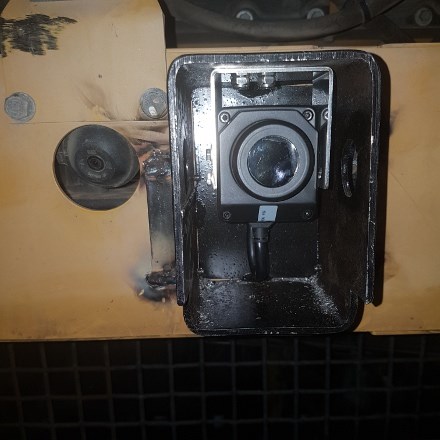A technology first used to give the military the ability to see in total darkness is finding a new application in mining.
Forward Looking Infrared (FLIR) has been used since the 1990s for night vision goggles for soldiers, and in cameras for police, emergency services and vehicle navigation for the general public.
For the last few years, Provix has been offering FLIR in their camera systems for heavy equipment surface mining, emergency services, mine rescue and private cars.
Now, the camera technology is getting another chance to be applied to underground mining as an innovative way for operators to have complete vision in even near total darkness.
“We tried introducing the FLIR systems years ago, but the cameras broke off the machines and at the time the cost was very high for clients,” said Dave Winfield, president of Provix.
“Our other cameras have been used underground for years, but the FLIR units are much more expensive, so it was an investment they couldn't make at the time.”
With mining experiencing an upswing, Winfield says companies are looking to invest in technology that improves not only productivity but safety as well.
The cameras allow for better vision in conditions that would otherwise shut down an operation, due to lack of sight.
“Once an operation has to slow down, or stop, that's money not being made,” he said. “This camera technology allows them to keep going without risking health and safety.”
The company offers FLIR for open-pit mining and above-ground mining to help operators see through dust, fog and whiteouts.
“They are proving very helpful in projects in places like B.C., where fog is a hazard in mining projects, and in Saudi Arabia, where dust storms can shut down a mine,” Winfield said.
“We have videos on our website and YouTube showing how effective the FLIR cameras are in seeing right through the debris. It's near-zero visibility, but the FLIR picks up a clear picture of the vehicles and environment around it.”
FLIR also relies on the air temperature being lower than human body temperature. Winfield said this makes FLIR ideal for Canadian conditions, as the air temperature is rarely higher than human body temperature.
He added he was quite surprised by how clear the images were.
Referring to a video the company released on YouTube, it shows vehicles working in near-zero visibility fog, but the thermal image on the screen is so clear minute details on vehicles and people in the dark can be picked up.
The cameras are already being used in mine rescue as hand-held and mounted units for teams to use to navigate in the low light, to spot hazards around them, and keep track of their team and accident victims, Winfield said.
Currently, underground mining vehicles are using a four-way camera system that is touted as giving an operator a 98 per cent line of sight around a machine.
It is known as a passive system. It tracks the vehicle's movement and the driver's actions. If a hazard is detected it sends out an alarm to warn the driver of impending danger.
For the FLIR, the company is testing a more active system in the Alberta oil sands and is waiting for validation before advertising it to the mining industries.
The four-way sight camera units are being tested at the Centre for Research for Occupational Safety and Health (CROSH) at Laurentian University in Sudbury. The aim is to determine if they can create a sturdier camera for use underground without affecting its line of sight.
Alison Godwin is in charge of the research on the four-way system cameras. She described the testing method as a virtual reality simulation giving a human perspective. CROSH currently has a research student working on the project.
“I run these cameras through a lot of simulations, mainly to see how we can improve the line of sight, reaction time and the alarm system so the operator can have clear vision and react,” she said.
They are not working on the thermal imaging cameras right now. Godwin said they are hoping to have one of those in the near future to run simulations on it.
The first time Provix implemented FLIR technology in their cameras was for emergency vehicles in Newfoundland and Labrador to help them see through fog.
The hope is the mining industry will start picking up on this new application of FLIR once it is proven to be effective underground.
It's already gaining interest, Winfield said.
“Uptake for mines to adopt new technology can be slow. We are hoping a mine leads the way by purchasing a thermal system and spreads the news,” he said.




